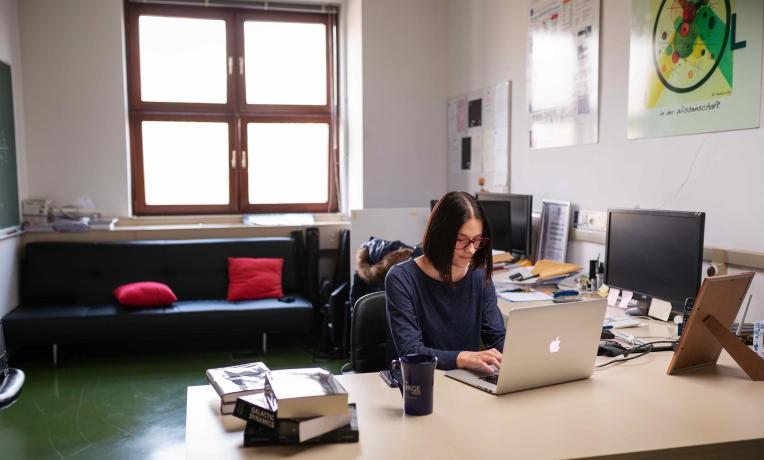Understanding the universe by stargazing through cosmic time

Human civilisation has always looked to the stars for answers to existential questions about the universe, such as how it came to be and what else could be out there. With ERC support, Vernesa Smolčić sought to answer some of these fundamental questions by closely analysing the evolution of galaxies throughout time. Based at the University of Zagreb in Croatia, she oversaw the reduction, imaging, testing and verification of hundreds of hours of radio telescope observations between 2014 and 2019.
Using this vast amount of data, Smolčić’s team has succeeded in probing galaxy and star formation back through cosmic time – as far back as around 1 billion years after the Big Bang.
Improved instrumentation brings forth new data
Smolčić felt a mix of excitement and uncertainty at the start of her ERC-funded work. ‘There were more than a few unknowns in the field due, primarily, to instrumental limitations at the time’, she explains. In 2014, Smolčić’s team was one of the first to use new and upgraded radio telescopes in Chile, USA, Australia and India. These telescopes offered a higher level of accuracy for tracing star formations and detecting galaxies, stretching back to when the universe was very young.
‘ERC funding really allowed me to conduct my research at the highest competitive levels’, Smolčić notes. Among other things, she was able to assemble a highly international team. Beyond the 2-7 researchers based at the hub in Croatia, and the 15-20 researchers who comprised the core radio team based both in Croatia and throughout Europe, she also routinely engaged with astronomy institutions from Italy, Germany, the United States, Chile, and Australia.
A window into the cosmic past
While the observation phase was very time consuming, Smolčić was immediately taken aback by the extent of the data. She was not only probing new areas of Space, but she was observing radio wavelengths that no other scientist had been able to see through a telescope lens in such detail, or for so many galaxies.
Three years down the line, her team had over 850 hours of data. They analysed and assembled datasets (radio sky mosaics, data collections) on various types of galaxies, their sources and physical properties. These datasets were made publicly available to the broader astronomy community, to be used by other scientists to explore more of the universe’s unknowns.
For Smolčić, the datasets are a critical legacy of her team’s work. ‘We basically prepared the grounds for the further exploration of galaxies with new radio facilities that are only now starting to operate to full capacity’, she says. At the time of writing, these datasets had been referenced in over 250 published papers.
From Croatia to the cosmos
On a personal level, Croatia was always an important location for Smolčić – starting with her childhood stargazing on the Croatian coast, her exposure to astronomy at school and eventual career as a professional astronomer. In 2014, she was one of the first researchers in Croatia to receive an ERC starting grant, which she says helped accelerate her career in the country. Throughout the grant, she advanced to a full professorship and now is one of the three leaders of COSMOS and part of the Scientific Steering Committee of XXL, both of which are international observational astronomy consortia. She also trained 7 junior researchers, who have since gone on to have successful careers.
In light of the above, her team’s achievements have propelled Croatian radio astronomy research on the international stage. Still, there is more work to be done with the massive amount of data her team has collected so far: ‘There is so much more to explore in even earlier cosmic time.’
How the ERC transformed science - interview with Vernesa Smolčić
About the researcher
Vernesa Smolčić studied physics at the University of Zagreb, where she is now a full professor at the Department of Physics in the Faculty of Science. She obtained her PhD in 2007 from the University of Heidelberg, Germany, followed by a postdoctoral position at Caltech in California, USA. In 2009, she obtained an independent ESO ALMA COFUND Fellowship from the European Southern Observatory. In 2013, she won one of the first ERC Starting Grants in Croatia.


